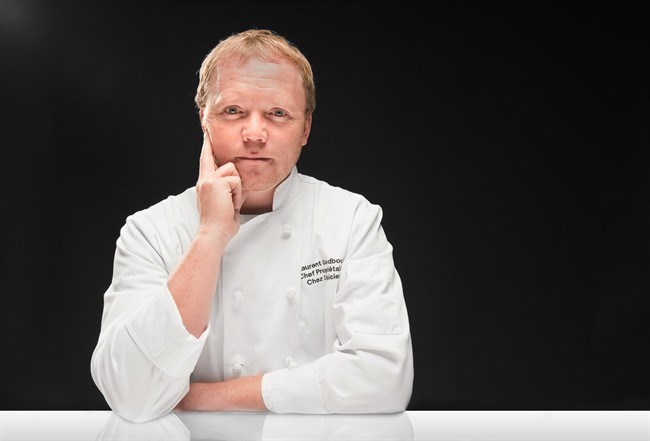LONDON, Ont. - There may be no signature ingredient more identified with Canadian cuisine than maple syrup, and with good reason. ��ѻ��ý produces about 85 per cent of the world's maple syrup. The only other place it's made is the northeastern United States.
The sap started flowing in acer saccharum — sugar maple trees — early this month and depending on the weather, the season may be winding down in more southern areas. But in other spots,particularly the eastern part of the Quebec, it is just starting and could run until the end of April.
About 90 per cent of Canadian maple syrup comes from Quebec, with Ontario, New Brunswick, Nova Scotia and Prince Edward Island making up the rest.
The best conditions for maple syrup are nights with temperatures a few degrees below zero and days a few degrees above, says Paul Rouillard, assistant director of the Federation of Quebec Maple Syrup Producers, based in Longueuil. The federation represents about 7,500 producers who tap sugar maples, plus some red and black maples, in hardwood bushes that stretch for 600 to 700 kilometres across the southern part of the province, says Rouillard.
In a good year, they will make about 45.5 million kilograms of the syrup. About 20 per cent of total Canadian production stays here and the rest is exported, most to the U.S. But Japan and Germany and 50 other countries also wanted a taste of the quintessential Canadian flavour last year, he says.
Maple syrup is one of the few products to which nothing is added during processing. When the sap comes out of the tree, it is clear, slightly sweet and has the consistency of spring water, says Agriculture ��ѻ��ý. It is then boiled down to eliminate much of the water and concentrate the sugars. It cannot be called pure maple syrup unless the sugar content is at least 66 degrees Brix (a measure of dry matter in a distilled water solution). Further reduction of the sap crystallizes the solution and allows creation of treats such as maple taffy, maple butter and soft and hard maple sugar.
The syrup is scientifically graded by density (sugar content) and colour and is marketed as ��ѻ��ý No. 1 (extra light, light and medium), ��ѻ��ý No. 2 (amber) and ��ѻ��ý No. 3 (dark). But it is also graded by taste.
"We have here at the federation 25 people who taste and smell each drum or barrel of the production of the maple syrup," says Rouillard.
That's about 200,000 barrels a season or about 200 different syrups a day per person. They classify it by taste and smell, he says. The samples that don't pass muster are sold for industrial purposes. Like wine-tasters, they never swallow and must cleanse their palates after each tasting.
"I like very much maple syrup but I'd never do their job," he says.
While most people use maple syrup to top pancakes or waffles, chef Laurent Godbout of Montreal can't think of one food it doesn't go well with.
"I use it for everything. I can put it in appetizers, main courses, as well as desserts. You can use (it) for a vinaigrette or dressing with maple syrup or maple vinegar. You can glaze with that, you can marinate. There's many, many ways you can use maple syrup."
When he created the menu for the sugar shack eatery at Erabliere Shefford, a maple syrup producer in the Eastern Townships, he didn't forget "the classical menu of every sugar shack in Quebec," such as baked beans, maple smoked ham and, of course, pancakes. But he put some twists on other dishes to make them more fun. Instead of the traditional way of serving maple taffy on snow, for example, his taffy is served in a cup of brown apple slush.
"The apple juice has enough acidity to cut the sweetness of the maple taffy." He suggests that any time you're serving a dish made with maple syrup, it's a good idea to accompany it with something slightly acidic to balance the sweetness.
For family-style dishes, pork is one of his favourite meats to use with maple syrup. At his Montreal restaurant, Chez L'Epicier, he gets a little more adventurous.
"I love to put it with foie gras. Most of the time I'm going to do a sauce. Or I marinate the foie gras in the maple syrup and cook it really slowly, as if I was poaching it. The syrup just goes around it. Then it's pan-fried, just 10 seconds on each side, to caramelize and crisp it."
If you cook maple syrup dishes slowly at lower temperatures, it doesn't burn easily, he says. But at higher temperatures, you have to watch it like any other products with high sugar content.
He prefers to use amber syrup to cook with. It has the full rich flavour he wants and because it's a little stronger than the lighter colours, he doesn't have to use quite as much.
Asked for a comparison between honey and maple syrup, he says he thinks maple syrup is "more delicate." But then he adds: "It's like a perfume. You don't want to use too much of it."



